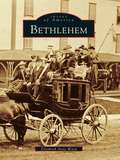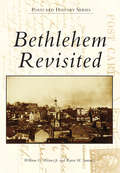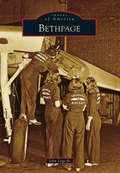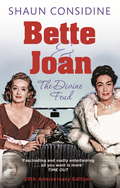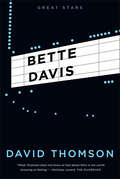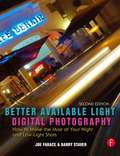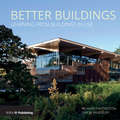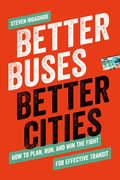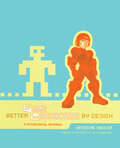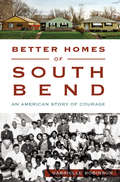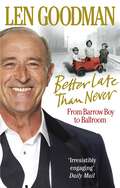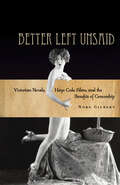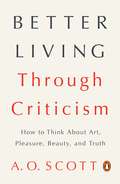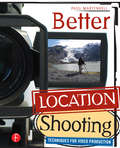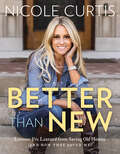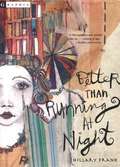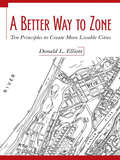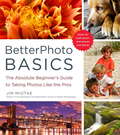- Table View
- List View
Bethlehem
by Elizabeth Anne WardOne hundred years ago, the White Mountains were America's favorite resort. Presidents, writers, artists, industrialists, and prominent individuals of all types came to stay in the grand hotels and enjoy the recreation and scenery. Bethlehem, New Hampshire, was in the center of all this activity. With more than thirty hotels and lodging places, the town became synonymous with summer leisure and relaxation. Visitors enjoyed golf, tennis, riding, scenic drives, balls and gala events, and lots of rocking chair time on the wide verandahs. Fresh, pollen-free air gave relief to those suffering from asthma and hay fever. P.T. Barnum called the annual coaching parades "the second greatest show on earth." By the 1920s, the automobile and expanded travel opportunities to the West and to Europe were forcing the grand hotels into decline. Fortunately for Bethlehem, the New York Jewish community discovered the town. Bethlehem became an almost entirely Jewish resort and prospered as such until the 1970s. Even today, several hotels cater to a small Hassidic population, and the Bethlehem Hebrew congregation is a small but active year-round Jewish community. In recent years Bethlehem has undergone a rebirth of sorts, with the renovation of historical buildings, the formation of a heritage society, and the renewal of interest and pride in Bethlehem's rich and colorful history.
Bethlehem Revisited
by William G. Weiner Jr. Karen M. SamuelsDue in part to the Lehigh Canal and the Lehigh Valley Railroad, Bethlehem evolved from a tranquil town to a modern industrial city. Built in 1829, the Lehigh Canal passed by the center of Bethlehem. With it brought a steady stream of outsiders who shaped and changed the community. The Lehigh Valley Railroad was established in South Bethlehem in the 1850s, turning the city into a manufacturing center with such new industries as Lehigh Zinc and Bethlehem Steel as well as silk mills. Bethlehem Revisited captures a city in transition, at a time when its streets could barely accommodate the influx of horses, trolleys, automobiles, and pedestrians. Bursting at its seams with people, businesses, and residences, Bethlehem comes alive through this collection of extraordinary postcards.
Bethpage
by John LogerfoLocated on New York's Long Island in Nassau County, the quaint, tight-knit town of Bethpage was established as a settlement for the Thomas Powell family in 1687. In the early years, it consisted of a few small villages of farmers. In 1884, the Long Island Rail Road extended through Bethpage, which was renamed Central Park. Many businesses opened up around the station, bringing the town to the attention of land buyers, which had an enormous impact on the growth of the community. It was here that the ground-breaking ceremony for William Vanderbilt's Motor Parkway opened in 1906 for the Vanderbilt Cup Races. This notoriety brought people to the town, as well as businesses, restaurants, and hotels, most notably the world-renowned Beau Sejour, which catered to aristocrats, socialites, and movie stars. The name Central Park was eventually changed back to Bethpage in 1936. Long Island State Parks commissioner Robert Moses soon opened the Bethpage State Park, with its five golf courses. Bethpage gained recognition for being the longtime home of the Grumman Aircraft Engineering Corporation, producers of Navy fighter aircraft and the Apollo lunar module, which landed men on the moon. Bethpage retains its sense of pride in its rich and historic heritage.
Betriebswirtschaftliche Herausforderungen im Planungsbüro: Schnelleinstieg für Architekten und Bauingenieure (essentials)
by Dietmar GoldammerDietmarGoldammer zeigt wie sich Architektur- und Ingenieurbüros auf veränderteArbeitswelten, soziale Verantwortung und Nachhaltigkeit als neueHerausforderungen einstellen müssen. Der Autor beschreibt Frühwarnsysteme,Zertifizierungen und neue Organisationsformen, die dabei helfen. Erthematisiert auch, wie die Regelung der Nachfolge des Unternehmers ausgestaltetwerden kann. So zeigt sich: Der gesellschaftliche Wandel ist auch in denPlanungsbüros angekommen. Es wäre ein Leichtsinn zu glauben, dass dort alles soweiter geht wie bisher. Das Essential hilft kurz und prägnant, die richtigenSchritte anzustoßen.
Bette And Joan: Divine Feud
by Shaun Considine'An absolute must-read' VANITY FAIRBette Davis and Joan Crawford: two of the deadliest arch-rivals of all time. Born in the same year (though Davis swore 'Crawford is five years older than me if she's a day'), the two fought bitterly throughout their long and brilliant Hollywood careers. Joan became a star first, which always irked her rival, who suggested her success had come via the casting couch. 'It sure as hell beats the hard cold floor' was Crawford's scathing response. According to Davis, Crawford was not only a nymphomaniac but also 'vain, jealous and about as stable and trustworthy as a basket of snakes'. Crawford, in turn, accused Davis of stealing her glory and planning to destroy her.The two rivals fought over as many men as they did parts - when Bette fell in love with her co-star in DANGEROUS, Franchot Tone, Joan stepped in and married him. The women worked together only once, in the classic thriller WHATEVER HAPPENED TO BABY JANE?, in which their violent hatred of each other as rival sisters was no act.'Shaun Considine's story of the two divas is vastly informative and in parts hilarious' SUNDAY TELEGRAPH'Fascinating and vastly entertaining . . . all you want is more' TIME OUT 'Considine's well-researched book is an account of one of Hollywood's most extraordinary relationships' DAILY EXPRESS '[A] Scurrilously readable twin biography' MAIL ON SUNDAY'Considine's dual biography is a guilty pleasure' SUNDAY HERALD'Brilliant, outrageous and hysterical' Suranne Jones (Star of BBC One's Doctor Foster)
Bette Davis (Great Stars)
by David Thomson"She could look demure while behaving like an empress. Blonde, with eyes like pearls too big for her head, she was very striking, but marginally pretty and certainly not beautiful . . . But it was her edge that made her memorable—her upstart superiority, her reluctance to pretend deference to others."Bette Davis was the commanding figure of the great era of Hollywood stardom, with a drive and energy that put her contemporaries in the shade. She played queens, jezebels, and bitches; she could out-talk any male costar; she warred with her studio, Warner Bros., worked like a demon, got through four husbands, was nominated for seven Oscars, and—no matter what—never gave up fighting. This is her story, from the acclaimed film critic David Thomson.
Better Available Light Digital Photography: How to Make the Most of Your Night and Low-Light Shots
by Joe Farace Barry StaverThis classic book on available light photography is back, thoroughly updated for digital photography and, for the first time, is packed with stunning, full color images throughout. Creating great images under less-than-ideal lighting conditions is one of the most difficult, yet rewarding, experiences in photography. Challenge yourself, and with this book by your side you won't be disappointed. Photography expert Joe Farace and Pulitzer Prize winner Barry Staver use real-world examples of their own images to give you invaluable advice on how to get the shot right the first time. From practical tips, such as how to deal with inclement weather while shooting outdoors, to detailed information about getting great shots at your cousin's or your client's wedding, to brand new chapters on noise and white balance, you'll find everything that you need to turn your ordinary night and low-light shots into masterful works of art.
Better Buildings: Learning from Buildings in Use
by Richard Partington Simon BradburyThis book started life as a successor to Sustainable Architecture, published in 2007, which set out to prove that sustainable architecture can indeed both ‘lift the spirit’ as well as save the planet. This fully revised edition seeks to take a step further, exploring how sustainable buildings are occupied and work, and sheds light on the methods used to observe this. Through short essays from thought-leaders and case studies of visually stunning, environmentally ground-breaking projects, Better Buildings provides architects with the inspiration and tools they need to deliver sustainable design.
Better Buses, Better Cities: How to Plan, Run, and Win the Fight for Effective Transit
by Steven HigashideImagine a bus system that is fast, frequent, and reliable—what would that change about your city?Buses can and should be the cornerstone of urban transportation. They offer affordable mobility and can connect citizens with every aspect of their lives. But in the US, they have long been an afterthought in budgeting and planning. With a compelling narrative and actionable steps, Better Buses, Better Cities inspires us to fix the bus.Transit expert Steven Higashide shows us what a successful bus system looks like with real-world stories of reform—such as Houston redrawing its bus network overnight, Boston making room on its streets to put buses first, and Indianapolis winning better bus service on Election Day. Higashide shows how to marshal the public in support of better buses and how new technologies can keep buses on time and make complex transit systems understandable.Higashide argues that better bus systems will create better cities for all citizens. The consequences of subpar transit service fall most heavily on vulnerable members of society. Transit systems should be planned to be inclusive and provide better service for all. These are difficult tasks that require institutional culture shifts; doing all of them requires resilient organizations and transformational leadership.Better bus service is key to making our cities better for all citizens. Better Buses, Better Cities describes how decision-makers, philanthropists, activists, and public agency leaders can work together to make the bus a win in any city.
Better Call Saul: The World According to Saul Goodman
by David StubbsWelcome lawbreakers!Injured on the job?Involved in a traffic accident?Confessed to a homicide?"Better Call Saul!"Call risk free now! (505) 503-4455This is your official guide to the world of Saul Goodman
Better Game Characters by Design: A Psychological Approach
by Katherine IsbisterGames are poised for a major evolution, driven by growth in technical sophistication and audience reach. Characters that create powerful social and emotional connections with players throughout the game-play itself (not just in cut scenes) will be essential to next-generation games. However, the principles of sophisticated character design and interaction are not widely understood within the game development community. Further complicating the situation are powerful gender and cultural issues that can influence perception of characters. Katherine Isbister has spent the last 10 years examining what makes interactions with computer characters useful and engaging to different audiences. This work has revealed that the key to good design is leveraging player psychology: understanding what's memorable, exciting, and useful to a person about real-life social interactions, and applying those insights to character design. Game designers who create great characters often make use of these psychological principles without realizing it. Better Game Characters by Design gives game design professionals and other interactive media designers a framework for understanding how social roles and perceptions affect players' reactions to characters, helping produce stronger designs and better results.
Better Homes and Gardens Kitchen and Bath Renovation Guide (Better Homes and Gardens Home)
by Better Homes and GardensThis essential resource will walk homeowners through the decision-making process for a kitchen or bath renovation to create the perfect space This indispensable reference covers everything homeowners need to know about making over the two rooms that yield the most resale value. Information is included for all stages of a kitchen or bath remodel, from inspiring before-and-after images to tips on getting started, with easy-to-read lists and sidebars on topics such as setting a budget and hiring professionals. Chapters highlight floor plan ideas, decorating styles, storage solutions, and lifestyle design choices. Plus, a handy shopping guide helps renovators choose key products, from kitchen cabinetry and cooktops to bathroom sinks and lighting. Complete with an appendix of checklists, this go-to guide is perfect for homeowners ready to update their spaces as well as those just looking for new ideas for renovations in the future.
Better Homes of South Bend: An American Story of Courage (American Heritage)
by Gabrielle RobinsonIn 1950, a group of African American workers at the Studebaker factory in South Bend met in secret. Their mission was to build homes away from the factories and slums where they were forced to live. They came from the South to make a better life for themselves and their children, but they found Jim Crow in the North as well. The meeting gave birth to Better Homes of South Bend, and a triumph against the entrenched racism of the times took all their courage, intelligence and perseverance. Author Gabrielle Robinson tells the story of their struggle and provides an intimate glimpse into a part of history that all too often is forgotten.
Better Late Than Never: From Barrow Boy to Ballroom
by Len GoodmanBetter Late Than Never is the extraordinary true story of how a man born into poverty in London's East End went on to find stardom late in life when he was chosen to be head judge on BBC1's Strictly Come Dancing. Len Goodman tells all about his new-found fame, his experiences on Strictly Come Dancing, and also on the no.1 US show Dancing with the Stars and his encounters with the likes of Heather Mills-McCartney and John Sergeant. But the real story is in his East End roots. And Len's early life couldn't be more East End. The son of a Bethnal Green costermonger he spent his formative years running the fruit and veg barrow and being bathed at night in the same water Nan used to cook the beetroot. There are echoes of Billy Elliot too. Though Len was a welder in the London Docks, he dreamt of being a professional footballer, and came close to making the grade had he not broken his foot on Hackney Marshes. The doctor recommended ballroom dancing as a light aid to his recovery. And Len, it turned out, was a natural. At first his family and work mates mocked, but soon he had made the final of a national competition and the welders descended en masse to the Albert Hall to cheer him on. With his dance partner, and then wife Cheryl, Len won the British Championships in his late twenties and ballroom dancing became his life. Funny and heart-warming, Len Goodman's autobiography has all the honest East End charm of Tommy Steele, Mike Read or Roberta Taylor.
Better Left Unsaid: Victorian Novels, Hays Code Films, and the Benefits of Censorship
by Nora GilbertBetter Left Unsaidis in the unseemly position of defending censorship from the central allegations that are traditionally leveled against it. Taking two genres generally presumed to have been stymied by the censor's knife--the Victorian novel and classical Hollywood film--this book reveals the varied ways in which censorship, for all its blustery self-righteousness, can actually be good for sex, politics, feminism, and art. As much as Victorianism is equated with such cultural impulses as repression and prudery, few scholars have explored the Victorian novel as a "censored" commodity--thanks, in large part, to the indirectness and intangibility of England's literary censorship process. This indirection stands in sharp contrast to the explicit, detailed formality of Hollywood's infamous Production Code of 1930. In comparing these two versions of censorship, Nora Gilbert explores the paradoxical effects of prohibitive practices. Rather than being ruined by censorship, Victorian novels and Hays Code films were stirred and stimulated by the very forces meant to restrain them.
Better Living Through Criticism
by A. O. ScottThe New York Times film critic shows why we need criticism now more than everFew could explain, let alone seek out, a career in criticism. Yet what A.O. Scott shows in Better Living Through Criticism is that we are, in fact, all critics: because critical thinking informs almost every aspect of artistic creation, of civil action, of interpersonal life. With penetrating insight and warm humor, Scott shows that while individual critics--himself included--can make mistakes and find flaws where they shouldn't, criticism as a discipline is one of the noblest, most creative, and urgent activities of modern existence.Using his own film criticism as a starting point--everything from his infamous dismissal of the international blockbuster The Avengers to his intense affection for Pixar's animinated Ratatouille--Scott expands outward, easily guiding readers through the complexities of Rilke and Shelley, the origins of Chuck Berry and the Rolling Stones, the power of Marina Abramovich and 'Ode on a Grecian Urn.' Drawing on the long tradition of criticism from Aristotle to Susan Sontag, Scott shows that real criticism was and always will be the breath of fresh air that allows true creativity to thrive. "The time for criticism is always now," Scott explains, "because the imperative to think clearly, to insist on the necessary balance of reason and passion, never goes away."From the Hardcover edition.
Better Living Through Origami: 20 Creative Paper Projects for a Beautiful Home
by Nellianna van den Baard Kenneth VeenenbosTake papercraft to a new creative level and turn your home into a designer haven with this DIY interiors book by Dutch design duo Studio Snowpuppe. Learn how to create 20 items of sustainable home decor using simple, mindful paper folding and manipulation techniques, and then show off your DIY creations at the heart of your home. Step-by-step illustrations will guide you through the projects, which include beautiful lampshades, creative wall art ideas, an ingenious clock, pretty garlands and decorations, unique vases, candle holders, plant holders, decorative bowls and more--all with a stylish modern aesthetic. Using readily available paper and card stock, you can create some stunning designer accents for your home for a fraction of the cost of store-bought versions.
Better Location Shooting: Techniques for Video Production
by Paul MartingellLocation filming is growing in popularity with the abundance of affordable cameras. You don't need a studio, a broadcast truck, or even extensive knowledge of how to use a 16mm film camera--all you need is a digital camera, and you can take your job on the road and shoot wherever action is happening! This book will give you the knowledge and confidence you need to take your on-location shooting skills to the next level. Better Location Filming is packed with the things you will need to know to have great results while shooting your documentary, interview, sporting event, fashion or glamour event, or current affairs/news show. Beyond introductory techniques, the author will tell you how to plan, troubleshoot, handle legal requirements and issues, and of course - he'll teach you all about location filming equipment. Practical and filled with hands-on pointers, this book is perfect for working and aspiring film & video professionals seeking a leg up in their careers. As a bonus, advanced tips are included for novices who are ready to take shooting techniques to the next level.
Better Than New: Lessons I've Learned from Saving Old Homes (and How They Saved Me)
by Nicole CurtisA New York Times and USA Today Bestseller For the first time, Nicole Curtis, the star of the megahit HGTV and DIY Network show Rehab Addict, reveals her private struggles, her personal victories, and the inspiring lessons we can all learn from them. Nicole Curtis is the tough, soulful, charismatic dynamo who for the past twenty years has worked tirelessly to restore historical houses, often revitalizing neighborhoods in the process. And also, in the process, drawing millions of fans to her television show, Rehab Addict, where they follow each step of the hard work and singular vision that transform the seemingly lost cause of a run-down building into a beautifully restored home. But there is so much more to this self-taught expert and working mom. With hersignature irresistible honesty and energy, Curtis writes about a project that every reader will find compelling: how she rehabbed herself. Better Than New reveals what’s not seen on TV—Curtis’s personal battles and her personal triumphs, her complicated relationships, her life as a single mother, the story of how she got started remodeling houses, and the consuming ins and outs of producing a megahit television show while keeping up with two kids, two rescue dogs, and countless tasks on her home renovation punch lists. Followers of the show will get an inside look at some of her most famous restorations, including the Dollar house, the Minnehaha house, the Campbell Street project, and the Ransom Gillis mansion. Part inspirational memoir and part self-help guide, Better Than New is a journey ineight chapters—each pinned to the story of a house that Curtis has remodeled, each delivering a hard-fought lesson about life—that takes readers to the place we all want to be: home.
Better Than Running at Night
by Hillary FrankHaving left behind the melodrama of her solitary high school days-and the beheaded martyrs in her paintings-Ellie arrives at the New England College of Art and Design. Looking forward to the opportunity to recreate herself and her art, she begins her first day by dirty dancing with the Devil. Then she makes out with him. Ellie soon learns a lot about herself in this story about independence, trust, and boys.
Better Things: Materials for Sustainable Product Design
by Daniel LidenHow often have you seen a label on a product proclaiming it to be made from 'recycled material', 'bioplastic' or similar, without it giving any details of the concrete environmental benefits? What do these terms really mean? A drive for greater transparency and demonstrable environmental benefits is happening in product design, through emerging legislation and standards, and consumer demand for more sustainable products and unambiguous marketing. In Better Things: Materials for Sustainable Product Design, Daniel Liden seeks to tackle the lazy 'greenwashing' terminology we see every day, providing a guide for product designers, manufacturers and consumers wishing to make better and more informed decisions about materials. The book comprises six chapters devoted to material categories - plastics, textiles, metals, ceramics and glass, wood and paper - and a seventh chapter covering emerging sustainable technologies. Each chapter includes interviews with industry experts, as well as photos, diagrams, environmental impact data, general material properties and more.
Better Things: Materials for Sustainable Product Design
by Daniel LidenHow often have you seen a label on a product proclaiming it to be made from 'recycled material', 'bioplastic' or similar, without it giving any details of the concrete environmental benefits? What do these terms really mean? A drive for greater transparency and demonstrable environmental benefits is happening in product design, through emerging legislation and standards, and consumer demand for more sustainable products and unambiguous marketing. In Better Things: Materials for Sustainable Product Design, Daniel Liden seeks to tackle the lazy 'greenwashing' terminology we see every day, providing a guide for product designers, manufacturers and consumers wishing to make better and more informed decisions about materials. The book comprises six chapters devoted to material categories - plastics, textiles, metals, ceramics and glass, wood and paper - and a seventh chapter covering emerging sustainable technologies. Each chapter includes interviews with industry experts, as well as photos, diagrams, environmental impact data, general material properties and more.
Better Together: Life Is Best with a Friend Like You
by Zondervan Warren PhotographicWouldn't life be boring if we were all exactly the same? And although each of us is unique, we're really not so different after all. And it's our differences that truly make us Better Together.Better Together combines adorable photos of unlikely animal pairs alongside poignant quotes on topics for friends of all stripes on subjects such as love, respect, and compassion. Memorable, wise words alongside sweet photography beautifully and humorously communicate the truth about and magic of friendship—that although we may not be exactly the same, we're really not so different after all.Quotes from George Washington to Bono focus on friendship, unity, strength, and on harmony between people with diverse viewpoints, lifestyles, or beliefs and include inspiring quotes such as: "Do I not destroy my enemies when I make them my friends?" -Abraham Lincoln"Friendship is born at that moment when one person says to another: 'What! You too? I thought I was the only one.'" -C. S. Lewis"'Stay' is a charming word in a friend's vocabulary." -Louisa May Alcott "I would rather walk with a friend in the dark than walk alone in the light." -Helen KellerBetter Together is full of reminders of the very best things about friendship and is the perfect way to tell someone you love: "Life is best with a friend like you."
A Better Way to Zone: Ten Principles to Create More Livable Cities
by Donald L. ElliottNearly all large American cities rely on zoning to regulate land use. According to Donald L. Elliott, however, zoning often discourages the very development that bigger cities need and want. In fact, Elliott thinks that zoning has become so complex that it is often dysfunctional and in desperate need of an overhaul. A Better Way to Zone explains precisely what has gone wrong and how it can be fixed. A Better Way to Zone explores the constitutional and legal framework of zoning, its evolution over the course of the twentieth century, the reasons behind major reform efforts of the past, and the adverse impacts of most current city zoning systems. To unravel what has gone wrong, Elliott identifies several assumptions behind early zoning that no longer hold true, four new land use drivers that have emerged since zoning began, and basic elements of good urban governance that are violated by prevailing forms of zoning. With insight and clarity, Elliott then identifies ten sound principles for change that would avoid these mistakes, produce more livable cities, and make zoning simpler to understand and use. He also proposes five practical steps to get started on the road to zoning reform. While recent discussion of zoning has focused on how cities should look, A Better Way to Zone does not follow that trend. Although New Urbanist tools, form-based zoning, and the SmartCode are making headlines both within and outside the planning profession, Elliott believes that each has limitations as a general approach to big city zoning. While all three trends include innovations that the profession badly needs, they are sometimes misapplied to situations where they do not work well. In contrast, A Better Way to Zone provides a vision of the future of zoning that is not tied to a particular picture of how cities should look, but is instead based on how cities should operate.
BetterPhoto Basics: The Absolute Beginner's Guide To Taking Photos Like A Pro
by Jim MiotkeAbsolutely anyone can take better photos! If you can press a button, you can take great pictures. It's as simple as that. Jim Miotke, founder of the popular online photography school BetterPhoto.com, shares tips and tricks to improve your photos right away, no matter what camera you're using. Too busy to read a book? No problem--flip to any page for an instant tip to use right away! Learn to compose knockout shots, make the most of indoor and outdoor light, and photograph twenty popular subjects, from sunsets and flowers to a family portrait. Those who want to go further get tips on controlling exposure and the secrets behind ten advanced creative techniques. And everyone will appreciate Jim's breakdown of easy fixes to make in Photoshop. No matter what your level of experience, you'll be amazed how easy it is to start taking photos like the pros.
